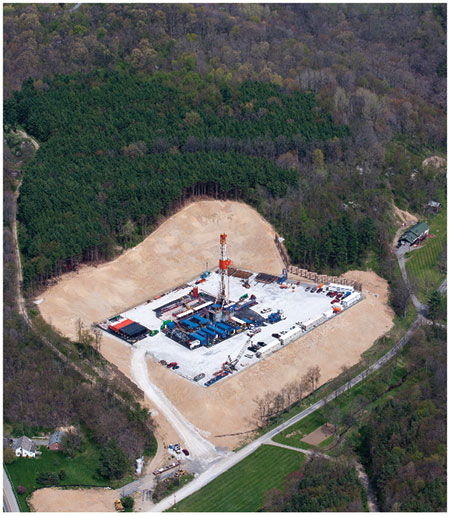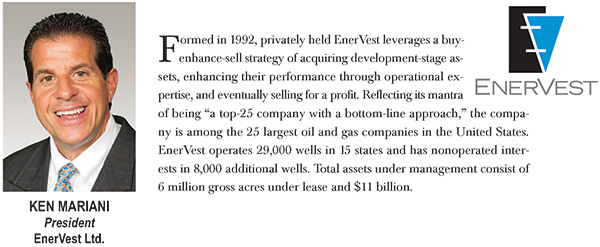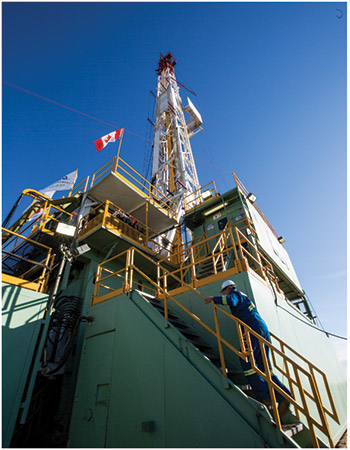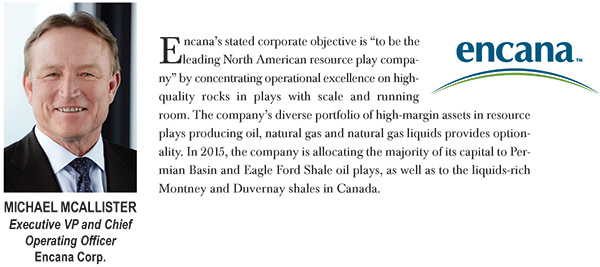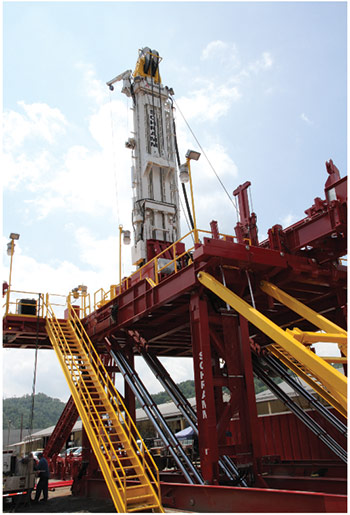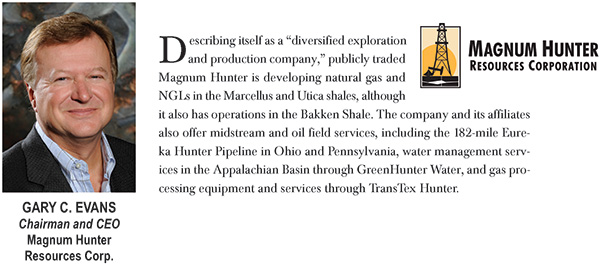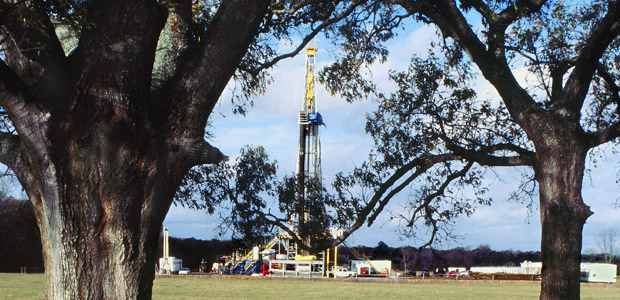
Industry Success Strategies
Operators Seek Efficiencies To Prepare For The Activity Upswing
By Colter Cookson
While lower oil prices have forced operators across the United States to scale back 2015 drilling and completion activities, in many cases their offices are as busy as ever. Anticipating an inevitable oil price recovery, many independent oil and gas companies are taking advantage of the industry breather to streamline processes, cross-train employees, analyze data, and high-grade drilling opportunities so they can ramp up activity as drilling economics improve.
In the meantime, many operators continue to drill on their best acreage, knowing that it remains profitable even at lower price levels. They also are looking for ways to increase production from existing assets, including tried-and-true optimization and maintenance procedures, as well as novel techniques.
On the financial side, independents are tapping private and public equity, paying down debt, and selling noncore assets to ensure they have the financial resources to weather price volatility and pounce on opportunistic acquisitions when the time is right. For these companies, the slowdown in activity provides chances to build larger lease positions in core plays to achieve even greater economies of scale, and to expand into proven plays with high potential.
Whatever their business model, today’s operators share a single goal: to emerge from the downturn stronger than ever. That means formulating business plans to succeed in today’s market environment, as well as to position themselves to be the early movers in capitalizing on opportunities as they emerge.
These overarching drivers are guiding both big-picture strategies and more fine-scale operational decisions all along the corporate chain of command.
EnerVest Ltd., a private company that buys, optimizes and sells assets, is one of many operators that is using the activity slowdown to turn itself into the oil and gas equivalent of a finely-tuned Formula 1® race car. “We want to be better positioned for future growth when we come on the upturn of this cycle,” explains Ken Mariani, the company’s president.
“We are doing a lot of the current industry condition basics, focusing on high-ticket items and renegotiating contracts with our vendors. We also are looking at processes, trying to be more efficient in how we manage our physical and human resource assets.”
Ken Mariani
“We are spending time with all our asset teams focused on initiatives to reduce costs,” he reports. “We are targeting a 10 percent reduction year-over-year on our lease operating expenses by doing a lot of the basics, focusing on high-ticket items, and renegotiating contracts with our vendors. We also are looking at processes, trying to be more efficient in how we manage our physical and human resource assets.”
In its negotiations with service companies, Mariani says EnerVest hopes to use its size. “We operate 29,000 wells in 15 states, and we are trying to leverage our size not only in the regions we operate, but across the company,” he details. “We are looking at all the major products we use across our asset areas, and seeing if it would make sense to form broader relationships with service companies where we would commit to buying from them in exchange for a higher discount.”
At the same time, EnerVest is optimizing its internal processes. “With the reduction in activity, our company is focused on enhancing major systems,” Mariani relates. “For example, we are converting our land and accounting system to a higher-powered platform that will allow us to grow more efficiently from a back-office support standpoint.”
Mariani says the system will provide greater efficiency by automating processes and generating reports the company previously had to prepare manually. He describes the conversation as a major project, noting it will require 20-40 dedicated employees.
“Another project, which is not as big but still significant, is a complete gas measurement field automation conversion,” Mariani continues. “Through acquisitions, we have come to use a variety of automation systems. We are going to consolidate a lot of them into one system that will interact with our new accounting and land system. That way, our employees will need to learn only one method of operating, which will allow us to be more efficient and enable better procedures and controls.”
High-Grading Drilling
Like most operators, EnerVest is drilling far fewer wells this year. “Our overall capital budget is reduced 60 percent from 2014, so we have a much smaller, high-graded drilling program,” Mariani says.
EnerVest is organized into six geographic asset regions: the San Juan-Uinta basins, the Permian Basin, the Austin Chalk, the Barnett Shale, the Anadarko Basin, and Appalachia-Utica Shale.
“At today’s prices, the areas that have attractive drilling economics include the wet gas window in the Utica and a very small area of the Barnett,” he reports. “Some areas in the Mid-Continent, which have a tendency to have oily components, make sense as well. However, in all these plays, we are focusing on the ‘core area of the core area’ and being far more selective where we drill.”
The company also is trying to reduce its drilling costs. “We are targeting a 25 percent reduction in the overall cost of a generic type well in each asset area,” Mariani details. “We hope to achieve 5-10 percent of that total reduction through efficiency improvements.”
Many of those improvements will result from careful planning, Mariani says. “One of the big challenges in a drilling program is getting the locations ready to be drilled. For the past few years, we have been running so fast that we have had rigs come into an area, drill one or two wells, and then leave because the land or the permits for the next well were not ready,” he recalls.
“Now, with the reduced activity levels, we are trying to do the preparatory work upfront and create an inventory of drilling locations so we can do a better job of scheduling services,” he says. “This should improve efficiencies and ultimately lead to lower service costs.”
Looking To Buy
EnerVest is positioned to be a major buyer in the oil and gas properties market, according to Mariani. In April, the company had its first close on its 14th private equity fund. “The fund will have $2.5 billion in equity, which with some conservative leverage, will give us $4.0 billion in buying power,” he reports.
Although open to entering new areas, Mariani says EnerVest is most interested in acquiring acreage where it already operates, particularly Appalachia, the Austin Chalk, the San Juan Basin, and the Permian Basin. “With the oil price drop over the past year, we anticipate good oil purchase opportunities in the second half of the year, including opportunities in areas that historically have been difficult to get into because of steep competition, such as the Eagle Ford and Permian,” he comments.
A wide disparity in asset valuations between buyers and sellers has kept property acquisition activity historically low in the first half of 2015, but Mariani says that should change going forward.
“For the past five years, the industry has averaged $55 billion a year in transactions. Through the first quarter of this year, there was only $1.3 billion in transactions,” he observes. “Activity is down because there is a big disconnect between seller expectations, which are based on high prices, and buyer expectations, which are based on current prices. As prices stabilize, the market will meet somewhere in the middle and more transactions will take place.”
Mariani identifies two other key factors that will prompt increased acquisition and divestiture activity in the months ahead. “First, hedges will begin to roll off for most exploration, drilling and production companies. Second, with the majority of companies cutting capital spending 40-70 percent this year, production on assets will decline. With fewer hedges and lower production levels, properties will support a lower borrowing base. There still is private equity in the market that could come into play, but we think many companies will choose to sell assets to create liquidity.”
Focused Strategy
For Michael McAllister, Encana Corp.’s executive vice president and chief operating officer, the key to surviving the ups and downs in the oil and gas industry is recognizing that even the clearest crystal ball is shrouded in fog. “As soon as you predict commodity prices, you quickly are proven wrong,” he suggests.
“I find it exciting to watch our teams rise to the challenge of making our projects better and better. They are finding ways to become more efficient, and then sharing their ideas with others so their projects can improve as well.”
Michael McAllister
“At Encana, we have built a company that can provide value through any price cycle,” he says. “Like many of our peers, we are tightening our focus. More than 80 percent of our 2015 capital is focused on our four most strategic plays: the Montney and Duvernay in Canada, and the Eagle Ford and Permian in Texas.
“Not only are these four plays among the best in North America, but we are situated in the best acreage within them,” McAllister says. “They contain the resource base that allows for good margins even at $50 oil prices and $3 natural gas prices, with low supply costs and significant running room to build scale and accelerate operational efficiencies. Also, all four offer good market access.”
Encana’s asset teams are maximizing these plays’ potential by finding ways to operate more efficiently, McAllister reports. “We built tremendous momentum in driving down costs through 2014, when costs were generally moving in the opposite direction in the industry,” he says. “This year, we expect to achieve a 15 percent improvement in capital efficiency through efforts across the company.”
Those efforts will include optimizing everything from drilling and completions to production, McCallister notes. He says the improvements are often straightforward, but take legwork to implement.
“For example,” he begins, “earlier this year in the Eagle Ford, we had 2,500 barrels a day shut in as a result of insufficient dehydration capacity. By working as a team and sharing information with groups across the company, we were able to find and move an underutilized dehydration unit from the Piceance Basin in Colorado to San Antonio and get it running within 10 days.”
The company is continuing to work with its suppliers and service companies to coordinate activities and increase efficiency, McAllister adds. In combination with internal efficiency improvements, he says these efforts have paid off.
To illustrate, McAllister offers the company’s Eagle Ford assets, which it acquired in June 2014. “By the fourth quarter, cycle times from spud to rig release dropped 25 percent, from 15 days to 11,” he reports. “Initial 30-day production increased an average of 25 percent per well and drilling costs dropped 10 percent, or about $300,000 per well.”
McAllister says Encana has achieved even greater cost reductions in the Duvernay Shale in Alberta, a play that has been dubbed “Canada’s Eagle Ford” because of its similar geologic framework with oil, condensate and dry gas windows. Encana is one of the largest leaseholders in the Duvernay, and its acreage position is concentrated in the oil and condensate windows.
“Through a combination of wellbore design optimization, adopting fit-for-purpose rigs, and implementing our resource play hub development model to leverage economies of scale, we reduced drilling costs year-over-year by 38 percent,” he relates.
Strong Staff
McAllister attributes Encana’s success to the talent and hands-on attitude of its employees. “We are encouraging staff across the organization to step up and take on roles to complete key strategic projects and solve challenges,” he notes. “For example, we have engineers in Calgary filling critical roles with our Permian Basin team.”
Such collaborative efforts have two benefits, McAllister argues. “First, we do not have to hire and train new staff in one area while we have underutilized talent in other areas. And second, it leads to more efficient sharing of information across the organization as teams become more integrated.”
Information sharing helped the company have its safest year ever in 2014, even as it adjusted to major acquisitions in the Eagle Ford and the Permian Basin. Encana acquired 45,400 net acres in the Karnes Trough (“the core of the core area”) in the Eagle Ford with more than 400 estimated well locations and 140,000 net acres in the target-rich Midland Basin with an estimated 5,000 well locations. “To set a safety record during a year when we experienced a tremendous amount of organizational change is a fantastic achievement by our staff,” McAllister says.
“In today’s price environment, it would be easy to adopt an attitude of doom and gloom,” McAllister allows. “But personally, I find it exciting to watch our teams rise to the challenge of making our projects better and better. They are finding ways to become more efficient, and then sharing their ideas with others so their projects can improve as well.”
Responding To Prices
In response to the declines in oil and natural gas prices, Magnum Hunter Resources Corp. decided to “hunker down” to wait out the worst of the downcycle, reports Chairman and Chief Executive Officer Gary C. Evans. “We made the decision on Jan. 1 to temporarily stop drilling and completion operations in order to conserve our liquidity. As well economics improve, we will look to resume drilling operations later in the year,” he clarifies.
Estimating that Marcellus service costs have fallen 20-25 percent from the highs of last year, Evans says the combination of good reservoir rock and a large acreage position in the Marcellus and Utica plays should allow Magnum Hunter to achieve attractive returns even at lower commodity prices. “We are seeking to get back to a 30-35 percent internal rate of return,” Evans details. “The high quality rock of the Marcellus and Utica in our lease position provide very favorable drilling results, but under current economic conditions, the focus is on managing costs and being selective about when to drill as much as about what prospects to drill.”
“The difference between this time and prior big price drops is the market could right itself much faster. The United States has the know-how, technology, people, equipment and infrastructure to succeed in shale plays, and that is why when things turn around, our industry will enable this country to become truly energy independent.”
Gary C. Evans
To increase its access to capital, Magnum Hunter is negotiating an approximately $500-million joint venture targeting Utica assets on the Ohio side of the Ohio River. Evans says the company expects to complete negotiations and form the venture by midsummer.
Magnum Hunter is taking advantage of the drilling respite to upgrade its internal information technology infrastructure, including installing a new enterprise resource planning system to improve business efficiencies and lower costs, Evans reports.
In the meantime, Evans says Magnum Hunter will continue to sharpen its operational focus on the Marcellus and Utica plays. “We continue to be happy with our decision to become a Marcellus/Utica pure play because we believe the rocks we have in the Marcellus and Utica are world-class reserves that can provide positive economics at lower commodity prices,” he comments.
Riding Out The Cycle
In his 30-year career, Evans has lived through his share of industry cycles. “This downturn is similar to the 2008 decline, but there a few differences,” he assesses. “The decline in prices has happened faster. However, oil and gas companies have greater access to capital in both the public and bond markets, so our industry has raised around $15 billion in the first four months of the year. That access to capital has helped minimize the pain suffered by exploration, drilling and production companies.
“The impact on the industry will be quite different from what we saw in the 1980s,” he adds. “Shale properties have decline curves much steeper than conventional vertical drilling, so we are going to see a more dramatic drop in production. In fact, it is occurring already. In early April, we began to witness a drop in Bakken oil production, and gas production has been flat since December. As a result, the rollover should happen much faster than in 2008.”
Even so, Evans predicts gas prices will stay within the $2.50-$3.50 range for the next two years. “Until more demand comes from industrial plants, chemical plants, coal-to-gas switching, and LNG exports, gas will continue to be all about weather,” he explains. “Fortunately, our Marcellus/Utica assets can generate positive returns down to $2.00 an Mcf.”
Turning to oil, he points out that U.S. storage levels reached an 80-year high in March. “However, gasoline demand is increasing rapidly, so we have forces working in our favor. If I had to predict oil prices, I would put them between $50 and $60 this year, maybe getting up to $70 next year,” Evans says.
If OPEC buckles or the turmoil in the Middle East intensifies, oil prices could recover more quickly. “Even if neither of those wild cards come into play, the market will right itself,” Evans assures. “The difference between this time and prior big price drops is that there is only 1.0 million-1.5 million bbl/d of oversupply in an 83-million bbl/d market. That is much smaller than the 14 million bbl/d oversupply we had in the 1980s, so the market could right itself much faster.”
While the aforementioned wild cards could create a V-shaped recovery, Evans reiterates that he expects a more gradual price increase. “Frankly, I am hoping the recovery will be gradual, because in the long run, that will be healthier for our industry. If prices stay close to where they are, we will learn to operate and build our businesses at $50 oil.
“The determining factor is good-quality rock,” he allows. “The longer today’s prices persist, the more the market will separate the haves and have-nots. If prices go back to $100, marginal properties will begin to work again. As is, we all are getting leaner and meaner, which is making us better prepared to operate successfully and at higher margins as prices recover.”
Technology will continue to play a key role in efficiency gains, Evans predicts. “It is what has allowed us to do what we are doing today, and it is not going to go away. We will continue to have new technology that will enable us to do things better,” he says. “The United States has the know-how, technology, people, equipment and infrastructure to succeed in shale plays, and that is why when things turn around, our industry will enable this country to become truly energy independent.”
For other great articles about exploration, drilling, completions and production, subscribe to The American Oil & Gas Reporter and bookmark www.aogr.com.














